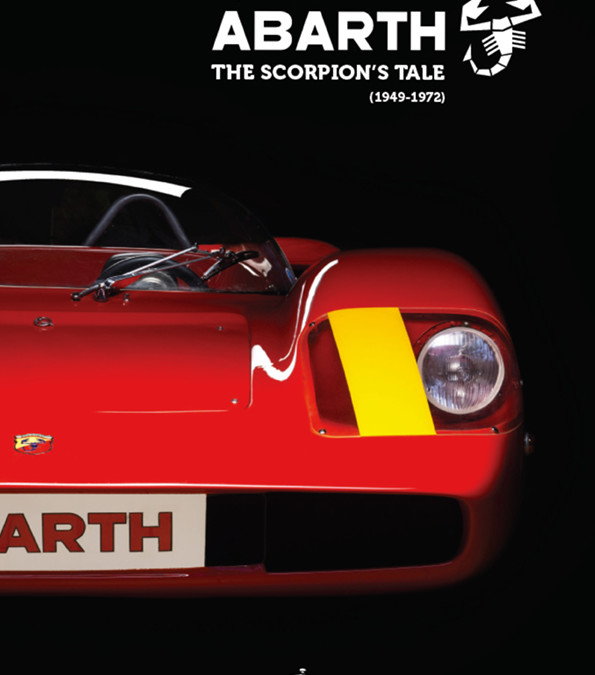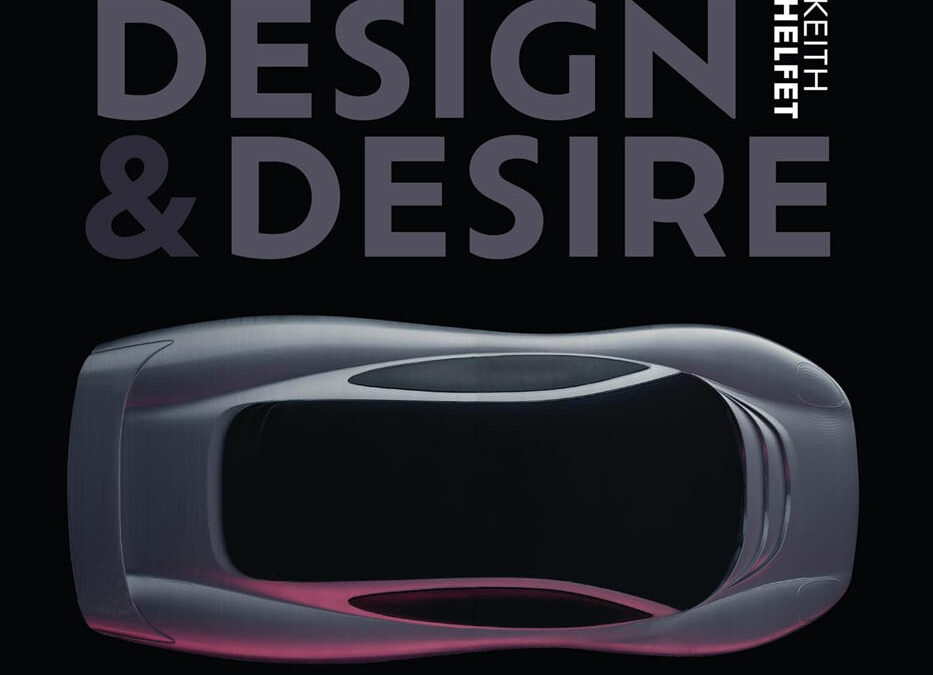
When Keith Helfet embarked upon an ambitious project to create a new body shape for a secondhand Triumph Spitfire using little more than foam offcuts and plaster of Paris, a life as one of the world’s most successful automotive designers seemed like an impossible dream. And yet that’s precisely what he would become.
After studying at London’s prestigious Royal College of Art, the South-African born youngster secured a job at Jaguar, where he would meet his mentor – marque founder Sir William Lyons. Thanks to his encouragement and guidance, Helfet would go on to create a number of iconic designs such as the XJ220 supercar, the XK180 and the beautiful F-type concept created in 2000.
With diversions into medical imaging, product design, power-assisted bicycles and electric vehicles, Design & Desire offers a personal insight into a unique and varied career that has spanned more than four decades – and counting…
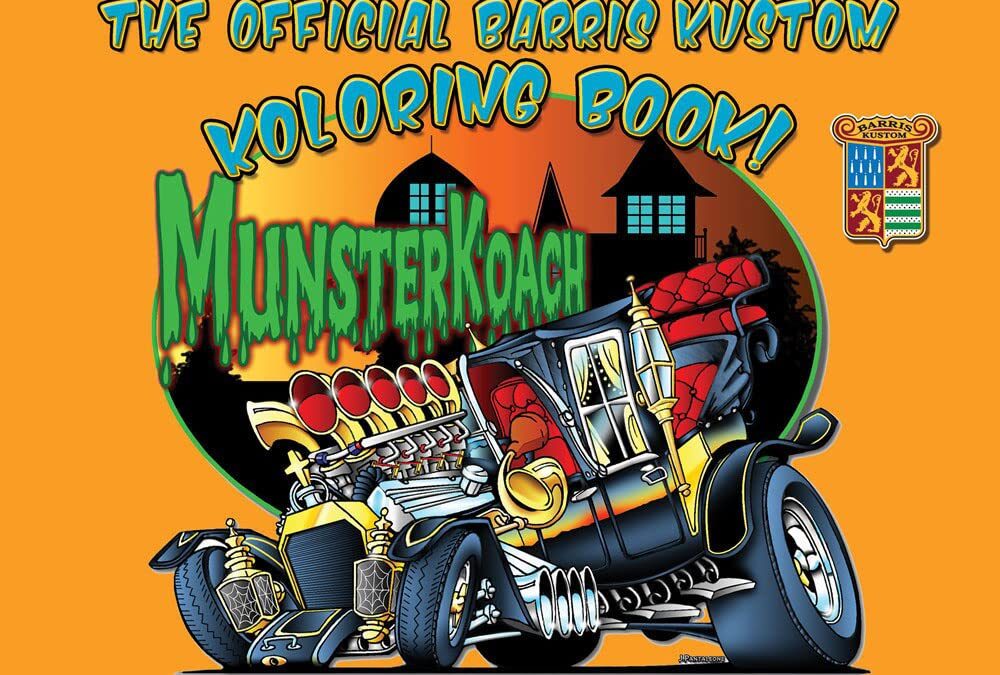
Have fun koloring these famous Barris Kustoms with illustrations by some of the top artists in the industry!
A collection of 26 illustrations of select cars, the design styles range from lowbrow to semi-realistic. Each image reflects the Barris Kustoms style and honors what George, Sam and Barris Kustoms were all about.
Add your own paint job to these unique vehicles:
Kopper Kart – Sam’s Merc – Emperor – Ala Kart – Silver Sapphire – Golden Sahara – Vox Mobile – Moonscope – Turbo Sonic – XPAC 400 – Beverly Hillbillies – Drag-u-la – Munster Koach – The CAR – Elvira Macabre Mobile – Red Foxx Wrecker – ZZR – Calico Surfer – Surf Hearse – Ice Cream Truck – Mail Truck – Alvin’s Acorn – Hirohata Merc
George Barris is undisputably the “King of the Kustomizers,” the most phenomenal kustom car builder ever. Barris created some of the best known and iconic cars of the 20th century, inlcuding the original TV Batmobile, the Munsters Koach, Hirohata Merc, Ala Kart and countless other made-to-order vehicles for movies, TV, and for the private use of his celebrity clients.
Art by Vince Ray, Dennis McPhail, Jeff Allison, Johnny Ace, Mike Bell, Shawn Dickinson, and Stephen Sandoval!
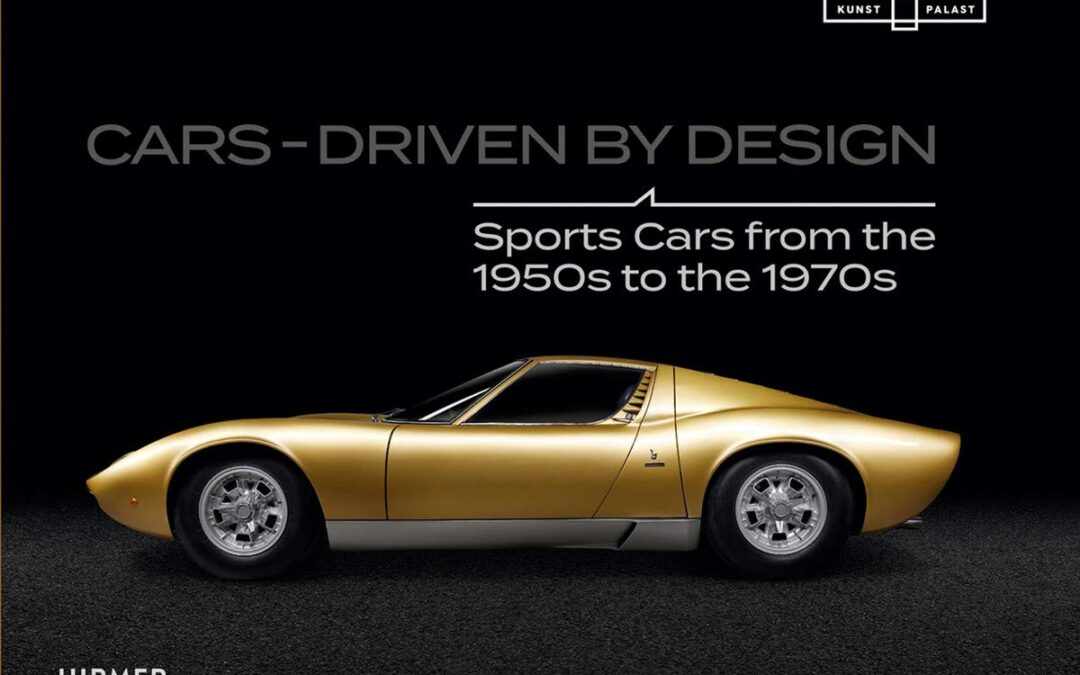
As a design object beyond its practical purpose, the automobile has left an indelible mark on the world we live in. There is scarcely another everyday item which has been designed in a more sophisticated and inventive manner and which offers a larger projection area. This can be seen with particular clarity in the sports car of the 1950s, ’60s, and ’70s, which are fast, beautiful, eccentric, and innovative. In recent decades, these coveted collector’s items have attained cult status, and have come to be widely regarded as dream cars for eternity. In an exciting journey through time, this volume pays homage to a selection of exclusive sports cars by legendary manufacturers—including Porsche, Ferrari, and Jaguar—showing them to be artworks in their own right. Essays, biographies, and brilliant color photographs shed light on the sports car’s unparalleled unity of form, technology, design, and emotions.
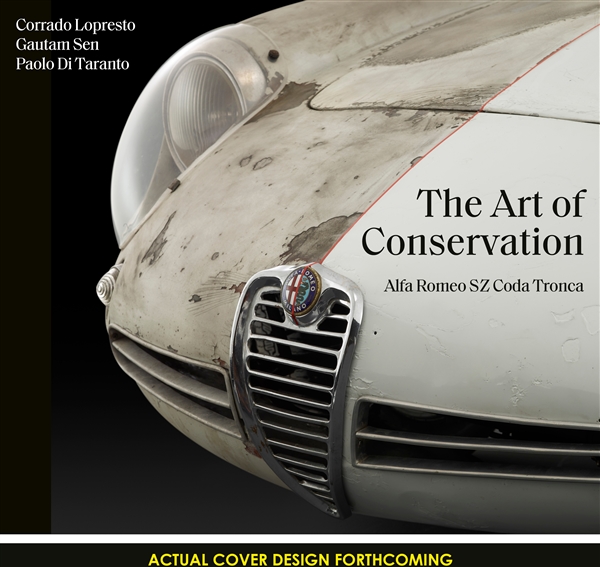
Pre-order now for early 2023 delivery
The story of rediscovering a very important historic vehicle and its conservation whereby the car has been treated as a work of art, saving as much as possible of the amazingly well preserved original. Drawing on art and archaeological techniques, prominent Italian collector Corrado Lopresto decided to clean only half the car, leaving the other half frozen in time. In the uncleaned half, Lopresto preserved everything (including the dust) under a thin layer of transparent matt lacquer. The cleaned part has not been restored either, but has been saved by retouching in such a way that the original aspects are not affected. This book “Alfa Romeo SZ Coda Tronca: The Art of Conservation” captures the rediscovery of this historic vehicle and the way it has been preserved – a fascinating tale of art meeting automobile. A very significant car in terms of aerodynamics and body design, this is the specific car on which the evolution from the Coda Tonda version of the Alfa Romeo Giulietta SZ to the Coda Tronca was executed
- Hidden for the best part of five decades, the car was rediscovered in the United States in a perfectly preserved state
- Acquired by the legendary Italian collector Corrado Lopresto, one half of the car has been conserved, and the other half has received light restoration to preserve the car in as original a state as possible, making it a unique experiment and example of conservation processes and concepts
- Not only did it win the Best Preserved Award at the Concorso Eleganza Villa d’Este in 2016, it also headlined the special exhibition of historic vehicles at UNESCO, Paris
- No doubt one of the most significant cases of a barn find, which has been preserved in the best possible way, thereby providing an example for the future
- Hard cover with dust jacket
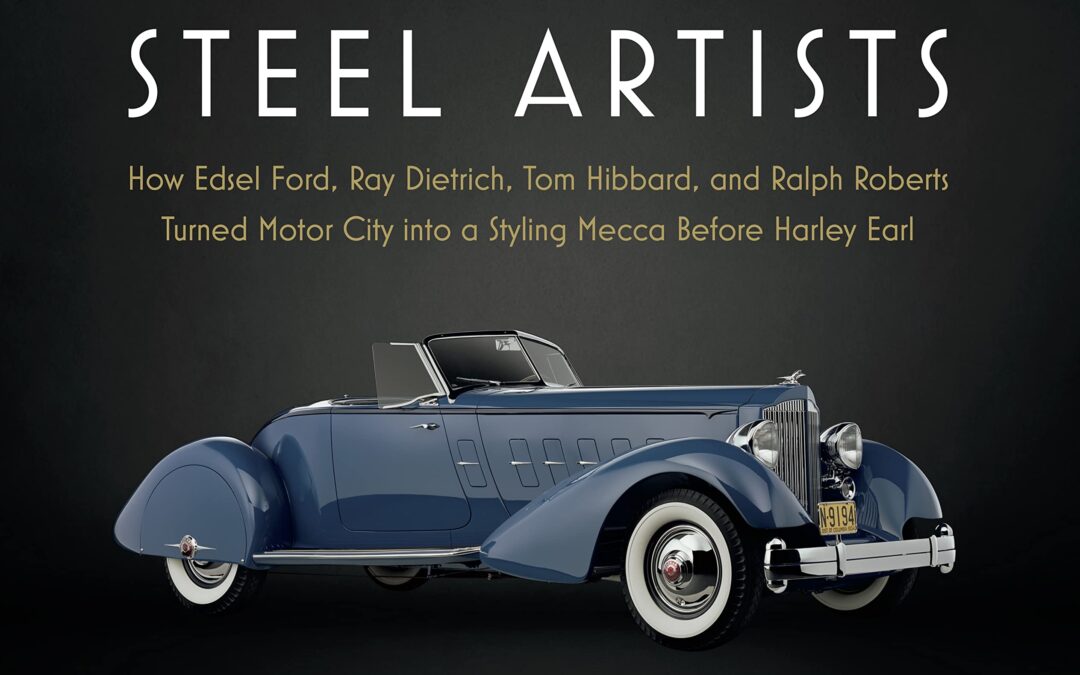
A groundbreaking book on how automotive styling was born, the artists who made it happen, and how Motor City was changed forever.
Printed in a large 12″ x 12″ format with 296 hardbound pages, Detroit Steel Artists is the first comprehensive story about the avant-garde artists of the automotive business—the industries’ outcasts who changed Motor City forever and made styling an important selling point in the early 1920s.
Styling is a given today for selling cars. How did that come to be? Societal changes, including the modernization of business and the women’s movement, were powerful factors for styling’s rise in significance. The forward-looking semi-custom car designs, from companies such as Le Baron and Dietrich, became a key strategy for styling’s acceptance in Detroit for production cars—before Harley Earl.
Inspired by Edsel Ford’s vision, Ray Dietrich, Tom Hibbard, and Ralph Roberts battled with engineers and executives in drafting rooms and board rooms over design. Packed with lively first-person stories supported by extensive research, Detroit Steel Artists relates the successes and failures of these fascinating pioneering steel artists. With more than a hundred period and modern images, Detroit Steel Artists takes readers on a panoramic tour of some of the most beautiful cars of the Classic Car Era—the zenith of automotive design.
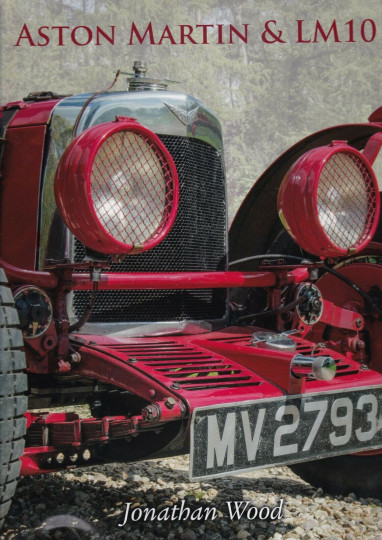
The book, numbering 350 pages, is prefaced with a foreword by Marek Reichman, Executive Vice President and Chief Creative Officer at Aston Martin Lagonda.
Jonathan Wood has written this book as a story, rather than a compendium of race results and Aston Martin models. The story is accompanied by sidebars which give more in-depth information on particular areas of interest.
The first 3 chapters are devoted to the history of Bamford & Martin, and Aston Martin up to 1932. The works Le Mans cars LM8, 9 and 10 are introduced for the first time in chapter 4. Much of the material in these early chapters has been contributed by Aston Martin’s archivists and has not previously been published.
The focus changes in the ensuing chapters to LM10, its sister cars, and their contribution both to Aston Martin’s racing pedigree and also to the development of Aston Martin road cars. The pre-war races are covered in some detail. As well as its 3 consecutive Le Mans finishes, LM10 was the works development car and the book details how improvements trialled at the Sarthe circuit were incorporated in the design of their most successful Le Mans road car, and the succeeding Ulster models. The history of LM10, its drivers and owners, is fully covered.
Unlike previous Aston Martin books, a large part of this volume is devoted to the lives of the individuals responsible for keeping the Aston Martin brand afloat, especially during the pre-war years.
Above all, it is primarily a story of the evolution of the Aston Martin brand, from its inception as Bamford & Martin to the post-war years. Sidebars included in the final 2 chapters briefly complete the Aston Martin story from Feltham to Ford, and up to the present day.

Before regulations constricted automobile design, cars were small, lithe, and voluptuous. Engines were analog, transmissions were manual, and the experience was visceral. For much of Porsche’s history, their use of air cooled engines helped to differentiate them from their competition. Air cooled engines, which were simple, lightweight, and great sounding, powered some of the marque’s most winning, expressive, and iconic street and race cars.In this book, the legendary 356, 550 Spyder, 911, The DKW-Porsche Special, Carrera GTS, Carrera 6, 910, 914, and 959 are represented in bold, evocative works of art. The illustrations in this book were digitally painted in both photorealistic and graphic styles using Adobe Illustrator, Photoshop, and Sketch. In addition to the finished pieces, many images of the works in progress offer glimpses into the artist’s process. A chapter detailing his techniques is included as well.
About the Artist: Since childhood, Geoff wanted to study car design, but always found reasons not to follow that dream… opting to follow a more practical route instead. After graduating from the prestigious School of Visual Arts (SVA), Geoff spent several years as a graphic designer. In the early 90’s, a promising “new” field (interactive media) piqued his interest, so he returned to SVA to earn a graduate degree in Computer Art. He then embarked on a career in user experience design; first with Time-Warner (where he worked on innovations such as the world’s first interactive TV system), then with The Walt Disney Company, Pioneer Electronics, and others. In his late 40’s, his childhood passion for cars finally motivated him to leave his career and enroll in ArtCenter College of Design’s highly respected Transportation Design program. While in school, Geoff began sketching classic cars as a way to hone his visual communication skills. But as time passed, this activity grew into a great labor of love. Geoff has earned many awards (and patents) for his work, and has been featured in Petrolicious, Worth Magazine, Panorama Magazine, and his artwork is displayed publicly and privately throughout the United States.
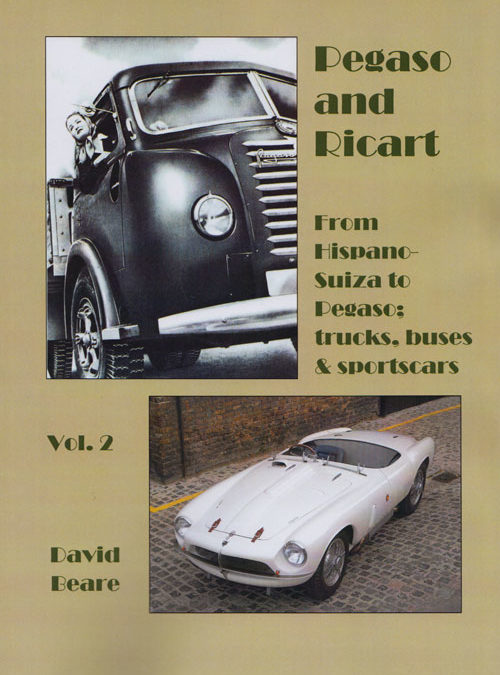
The second volume of the Hispano-Suiza and Pegaso books
The book covers the career of Catalan engineer Wifredo Ricart and his early designs and creations of the 1920s and 1930s in Spain- (Ricart y Peréz 1922-26), S.A. Automóviles Ricart (1926-28) and Ricart España (1928-30). Ricart then moved to Italy and was employed by Alfa Romeo as a consultant engineer from 1936 to 1945, where he was involved in the design and building of the Alfa Romeo Tipo 162 V-16 and the mid-engined flat-12 Tipo 512 racing cars, only for WWII to interrupt developments, so neither car was raced. It was during this period that Ricart clashed with Enzo Ferrari, who was racing-team manager for Alfa Romeo at the time.
In the early war years Ricart designed and built the extraordinary 28-cylinder 2,000bhp Tipo 1101 Alfa Romeo aero-engine, which had seven banks of four cylinders and was exceptionally light and compact.
Ricart, accompanied by a small group of loyal Italian engineers and ex-collegues, left Alfa Romeo and chaotic Italy in 1945 and returned to Barcelona. They were recruited by the government of Generalissimo Franco to create a new truck-building company, Pegaso, to produce desperately-needed trucks and buses for Spain, which they did with great success, designing and developing a number of modern industrial vehicles. Most of this took place in the ex- Hispano-Suiza factory in Barcelona, taken over by the government for this purpose, complete with the highly-skilled and experienced workforce which had previously built Marc Birkigt’s Hispano-Suiza T-35 aero-engines.
Part of Ricart’s remit was to educate and train a new generation of Spanish engineers, technicians and mechanics able to deal with modern technologies being used throughout Europe, but which were sorely lacking in Spain. The astonishingly advanced Pegaso Z-102 and Z-103 sportscars of 1951-1957 were in part the result of this training program, giving hands-on experience to legions of apprentices and enhancing Spain’s prestige as a new motor-manufacturing nation.
Only 86 Pegaso sportscars were made in total before Ricart was ordered to desist and concentrate on trucks and buses again by a reactionary management under political control. The political, social and economic influences which dictated Spain’s progress through the post-civil war era of 1939-1960 are also studied as they are important backgrounds to the evolution of the Pegaso company.
Mainly Spanish sources have been used to give an accurate picture of events leading up to Ricart’s creation of the legendary Pegaso sportscars and their subsequent careers in motorsport or on the Concours d’Elégance circuits. Many Z-102s have survived, despite determined efforts by Pegaso management in the late 1950s to erase them from the company’s history. Pegaso sportscars are now highly-prized worldwide.
A4 format, soft covers, 117 pages with colour and b/w images throughout, mostly contemporary with the period.
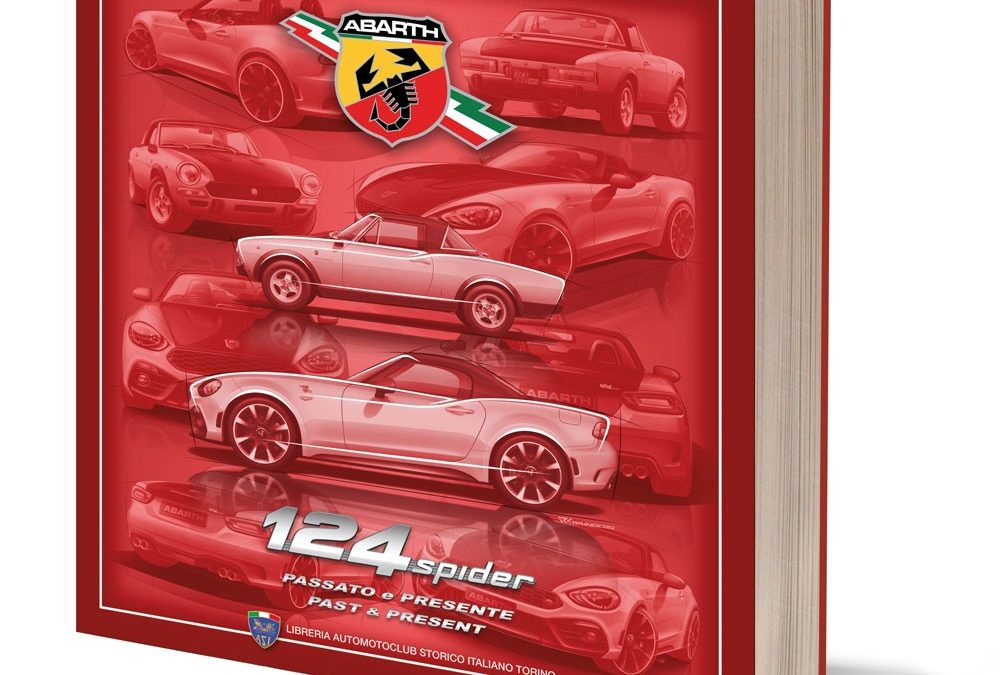
in 1966, Fiat introduced the 124 Spider and, in the space of 50 years, in 2016 proposed the same model revised with current stylistic and technical standards.
In 1966, the Fiat 124 Sport Spider burst strongly into the sports car market with a very elegant line and the world’s first twin-cam engine driven by a toothed belt. Private drivers immediately appreciate the great road qualities and employ it both in speed racing and in rallies. In 1970 the private Alcide Paganelli and Ninni Russo won the Italian Rally Championship; in 1972 the private Lele Pinto and Gino Macaluso, assisted by the House, conquered the Central European Championship (Mitropa Cup). In the same year the Abarth prepares the absolute weapon for the Squadra Corse, which becomes official. In three years of rallying at the highest level the Fiat Abarth 124 Rally enters the legend catching numerous statements and winning the European Championship in 1975 and the Italian Rally Championship in 1974 and 1975. In 2016 the model long regretted by fans returns in a guise all new, very modern and technological, which in any case draws from the great tradition of the past. The book tells the evolution of the 124 Sport Spider in the various displacements and the 124 Abarth Rally and summarizes in seven chapters their competitive events. Finally, it follows the genesis of the new Abarth 124 from design to competitive debut. The texts are supported by over 300 current and current images, many of which are unpublished, detailed technical data sheets, lists of “racing” plates and other documents important for the knowledge and correct conservation of the models.
The authors Elvio Deganello and Roberto Valentini have divided the competences: Deganello – besides being a respected journalist, a competent ASI technical commissioner – has oversaw the historical part; Valentini, who had the opportunity to follow step by step the development of the 2016 model, tells about this exciting new adventure in the world of rallies. The photographs of the Actualfoto archive are essential, allowing to relive the competitions of the past.
Important is the role of Ruben Wainberg, designer of today’s Abarth 124, who has worked on this book with passion, devoting himself to his graphic design, in collaboration with Patrizia Bisa, art director of La Manovella magazine. To follow the chapter of the stylistic transition between the old and the new Fiat 124 model, which is due to the clever pen and inventiveness of Roberto Giolito, already author of a cult model like the new 500. Today Giolito is responsible for the Heritage sector of FCA and therefore represents the relationship between the great history of the brands that are part of the group and its present.
Text in English and Italian

Three quarters of a million people are in a plane somewhere right now. Many millions travel by air each day. For most of us, the experience of being in an airport is to be endured rather than appreciated, with little thought for the quality of the architecture. No matter how hard even the world’s best architects have tried, it is difficult to make a beautiful airport.
And yet such places do exist. Cathedrals of the jet age that offer something of the transcendence of flight even in an era of mass travel and budget fares. Here are twenty-one of the most beautiful airports in the world.
The book features:
Wellington International Airport, ‘The Rock’ shaped like the dangerous cliffs of a local legend
Kansai International Airport, Renzo Piano’s gigantic project built on three mountains of landfill
Shenzhen International Airport, a manta ray shaped terminal putting this booming region on the map
Daocheng Yading Airport, the world’s highest civilian airport in the middle of the Tibetan mountains
Chhatrapati Shijavi International Airport, rising from the slums of Mumbai like a Mogul palace
Queen Tamar Airport, a playfully iconic modern airport nestled in the mountains of Georgia
King Abdulaziz International Airport, the gateway to Mecca resembling a Bedouin city of tents
Pulkovo Airport, mirroring the city of St Petersburg with bridges, squares and art
Berlin-Tegel Airport, ultramodernity, 1970s style
Copenhagen Airport, an icon from the golden age of air travel
Franz Josef Strauß Airport, sober and easy to negotiate, Munich’s model airport
Paris Charles du Gaulle Airport, the brutalist icon that launched the career of airport architect Paul Andreu
London Stansted Airport, Norman Foster’s return to the golden age of air travel
Lleida-Alguaire Airport, a relic of Catalonia’s early 21st century building boom
Madrid-Barajas Airport, Richard Rogers and Antonio Lamela’s calm, bamboo-panelled Terminal 4
Marrakesh Ménara Airport, a blend of 21st century construction and traditional Morrocan design
Santos Dumont Airport, Rio de Janeiro’s modernist masterpiece
Carrasco International Airport, Rafael Viñoly’s design inspired by the sand dunes of his native Uruguay
Malvinas Argentinas International Airport, echoing the mountains and glaciers of Tierra del Fuego
John F Kennedy International Airport, Eero Saarinen’s glamorous jet-age TWA terminal
Spaceport America, a vision of the future in the New Mexico desert

In production from 1966 to 1985, the Pininfarina-designed 124 Spider was a huge export success for Fiat with over 170,000 examples being sold in the USA alone, whilst the 124 Coupe, styled by Boano, also enjoyed sales success throughout the world between 1967 and 1975. Both cars used Fiat’s willing and technically advanced twin-cam engine in sizes ranging from 1400 to 2000cc. Towards the end of production the Spider even enjoyed supercharged performance in its Volumex form.
Not to be forgotten is the 124 Spider’s important rule in international rallying during the 1970s, when the cars created and homologated by Abarth were very successful and always newsworthy. Over 1000 examples of the legendary Fiat-Abarth 124 Spider were built and today, deservedly, these traditionally black-bonneted/hooded cars enjoy great status amongst serious collectors.
Here, from an enthusiast author, is the complete history of these important cars, including motorsport. Also within these covers the enthusiast will find expert advice on which model to choose, restoration, clubs, specialists and what it’s like to live with a Fiat 124 Spider or Coupe.

The 1970-1974 Plymouth Barracudas and Dodge Challengers are compact, lightweight, and extremely powerful pony cars; some are considered to be the greatest Mopar muscle cars of the era. The platform, known as the E-Body for this generation, was Chrysler’s response to the competition from the Ford Mustang and Chevy Camaro. Today, the E-Body Barracudas and Challengers are some of the most valuable and popular muscle cars ever built.
In The Definitive Barracuda & Challenger Guide: 1970-1974, seasoned journalist Scott Ross has unearthed new information from the key personnel involved in designing, engineering, and building these brash muscle cars. Ross provides comprehensive engine, transmission, and interior options as well as essential trim package and color code information. You learn the bottom line on original equipment packages and options. Ross covers Special Edition, R/T, Gran Coupe, and Rapid Transit System packages. And of course, the preeminent models in the lineup, Hemi ‘Cuda, Challenger 440 six pack, AAR ‘Cuda, and Challenger TA are covered in extensive detail. The large option list (and which options were available on which cars) is covered in great detail, which will greatly assist you with authentication.
Barracudas and Challengers are some of the most powerful and valuable Mopar muscle cars ever built. If you have been searching for the comprehensive story and vital option information for these classic Mopar muscle cars, you don’t need to look any further.
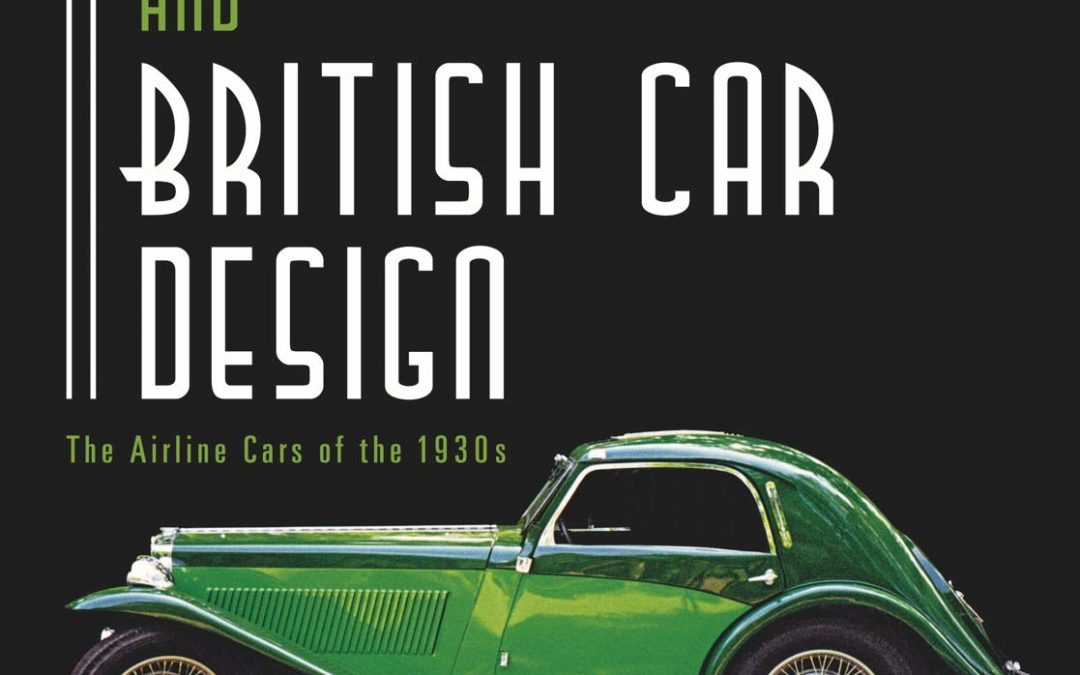
Art Deco and British Car Design is a book about automotive styling, in particular the streamlined styling that defined what are now known as Airline cars. During the mid-1930s, the majority of British car manufacturers and coach builders experimented with streamlined styling. This fashion was the result of Art Deco, an international movement that influenced design and marketing in many different industries, and produced some of the most unique and visually exhilarating cars ever produced in Britain.
Part One of the book explains and illustrates the Art Deco styling elements that link these streamlined car designs, and describes their development, their commonality, and their unique aeronautical names. The stories of the individual cars, their designers, and their development, are told in Part Two. Here, Barrie Down has collected examples of all the significant British streamlined production cars made between 1933 and 1936, many of them still represented by beautifully restored survivors.
The book is well illustrated with over 200 contemporary pictures and colour photographs of existing cars, many of which have never before been published. Art Deco and British Car Design is an instructive and visual feast for all car lovers.
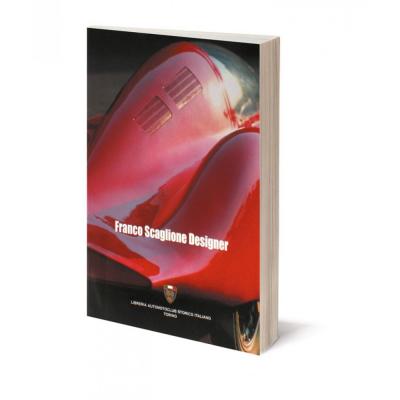
SOLD OUT AWAITING PUBLISHER RE-PRINT
The first volume of the ASI series on Designers.
As the designer of such icons as the Giulietta Sprint,and Sprint Speciale, the Alfa Romeo B.A.T. cars,Maserati 3500 and countless others for Bertone, Abarth, Porsche and even Corvette, Scaglione has left an indelible mark in the history of design.
Many period photographs.
Text in English and Italian

“King of the Kustomizers” is the sobriquet given to George Barris, the most phenomenal kustom car builder ever. His contributions to American car culture include creating some of the best known cars of the 20th Century, like the original TV Batmobile and Munsters Koach, as well as made-to-order vehicles for movies, TV, corporate sponsors and the private use of the rich and famous. A multimedia artist in his own right whose designs have embraced toys, model kits, mini-bikes, motor homes and motorized surfboards, Barris has also enjoyed success as a photographic chronicler of celebrity and pop culture over decades, capturing the car-crazed zeitgeist of his times as it carried him to the crest of fame itself. The definitive work on a legend, King of the Kustomizers: The Art of George Barris features nearly 500 pages jam-packed with never-before-seen photos, concept drawings and blueprints covering the full spectrum of Barris’ design genius and celebrity lifestyle. Written by an all-star line-up of contributors, the book contains many untold stories and rare images from both the famous and not so famous works of George Barris that helped define American pop culture as we know it. A generous selection of Barris tribute art —some created especially for this volume —by a legion of artistic admirers is also included to showcase his enduring influence and legacy. This is one ride you don’t want to miss!
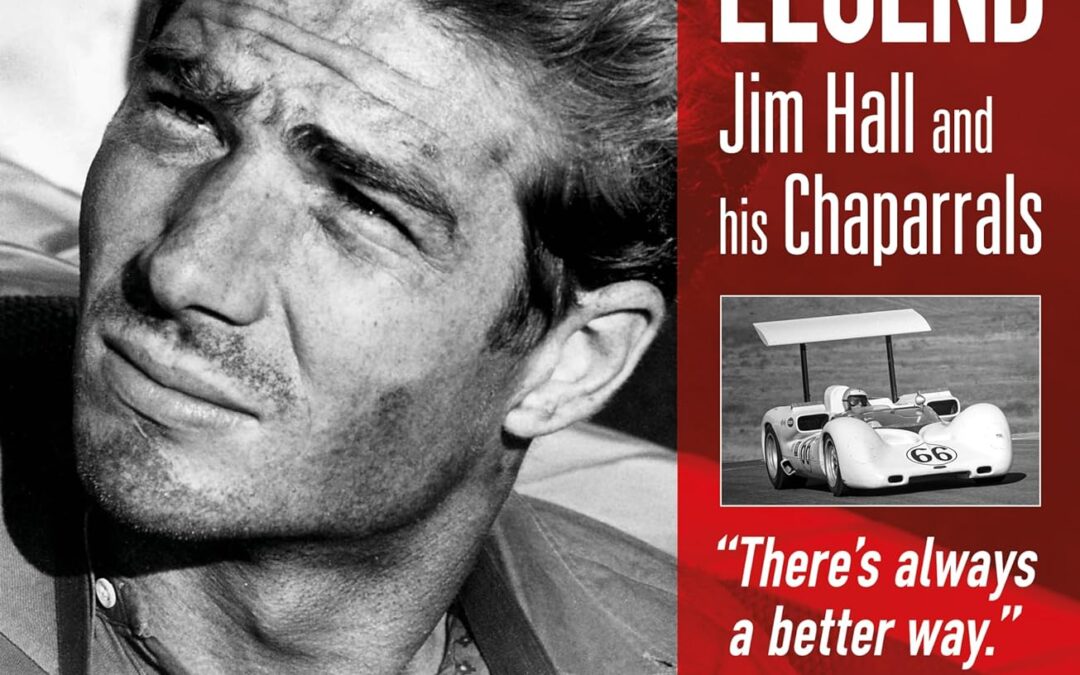
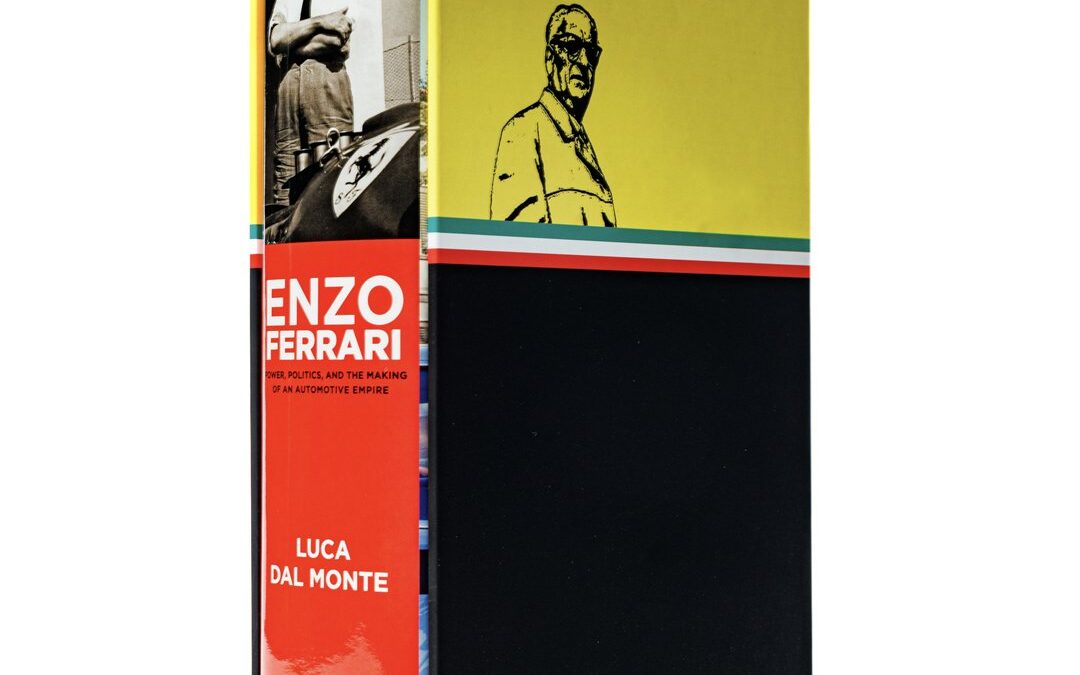
When Enzo Ferrari was born in 1898, automobiles were still a novelty in his native Italy. When he died ninety years later, the company he built stood at the top of a global industry, with the Ferrari name universally recognized for performance, racing prowess, and state-of-the-art Italian design. Enzo Ferrari: Power, Politics, and the Making of an Automotive Empire is the definitive account of an epic life.
Drawing on years of original research conducted in Italy and abroad, author and Ferrari insider, Luca Dal Monte, uncovers a wealth of new facts about Enzo’s origins, ambitions, business practices, and private life. The book revisits all the highlights of Ferrari’s rise to greatness: his driving career in the 1920s; his management of racing teams for Alfa Romeo in the 1930s; the launch of his own company and team in the late 1940s, and his unprecedented successes building cars for the road and race track in the following decades. But the book also examines lesser-known and sometimes hidden aspects of Ferrari’s career, from his earliest failed business ventures to his political dealings with Italy’s Fascist government, Allied occupiers, and even Communist leaders. And it lays bare the internal politics of the Ferrari company and team, whose leader manipulated employees, drivers, competitors and the media with a volatile mixture of brute force, paranoia, and guile.
Accompanying the in-depth text are extensive endnotes along with a full bibliography and index. The book is illustrated with four separate sections of photos, exhibits and artefacts, and opens with a foreword by former Ferrari president Luca Di Montezumolo, who previously served as the company’s Formula One team manager.
This is truly the definitive biography of Enzo Ferrari, one that makes previous accounts obsolete. Its depth, scale, and detail make it essential reading for automotive and motorsport enthusiasts. But other readers will be drawn to a sweeping story of Italian life, business, and culture during the 20th century.

#1 SUNDAY TIMES BESTSELLER • A high-octane, no-holds-barred account of a year inside Formula 1 from Haas team principal Guenther Steiner, star of Drive to Survive, one of the most successful Netflix series of all time
“People talk about football managers being under pressure. Trust me, that’s nothing. Pressure is watching one of your drivers hit a barrier at 190mph and exploding before your eyes…”
In Surviving to Drive, Haas team principal Guenther Steiner brings readers inside his Formula 1 team for the entirety of the 2022 season, giving an unobstructed view of what really takes place behind the scenes. Through this unique lens, Steiner guides readers on the thrilling rollercoaster of life at the heart of high-stakes motor racing. Packed full of twists and turns, from pre-season preparations to hiring and firing drivers, from the design, launch, and testing of a car to the race calendar itself–Surviving to Drive is the first time that an Formula 1 team has allowed an acting team principal to tell the full story of a whole season.
Uncompromising and searingly honest, told in Steiner’s inimitable style, Surviving to Drive is a fascinating and hugely entertaining account of the realities of running a Formula 1 team.
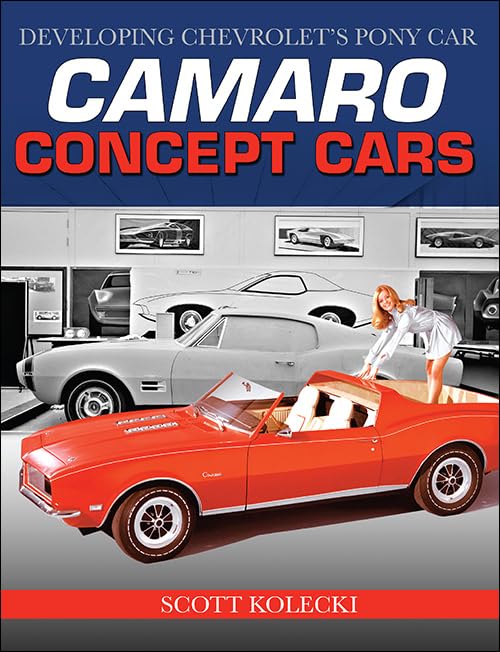
Learn about the creation of every generation of Chevrolet’s pony car!
For more than 50 years, the Chevrolet Camaro has been an indelible part of the modern automotive landscape. Since its introduction in 1967, Chevrolet’s immensely popular pony car has redefined American automotive styling by setting the bar and then raising it with the introduction of each generation.
How did the Camaro become one of the most celebrated automobiles of all time? What was its origin? What factors contributed to its creation and continued evolution through periods of economic uncertainty? How, when so many other cars have come and gone, has the Camaro survived and flourished?
Automotive historian Scott Kolecki explores those questions in Camaro Concept Cars: Developing Chevrolet’s Pony Car, as he introduces the men and women who created Chevrolet’s successful sports car. This book looks at the factors that contributed to its evolution through six distinct generations and explores the concept and design prototypes that gave rise to the production models that we know and love today.
This is the ultimate book for anyone who has owned (or dreamed of owning) a Camaro as well as for the countless enthusiasts around the globe who continue to celebrate and share the car’s rich heritage with future generations.













